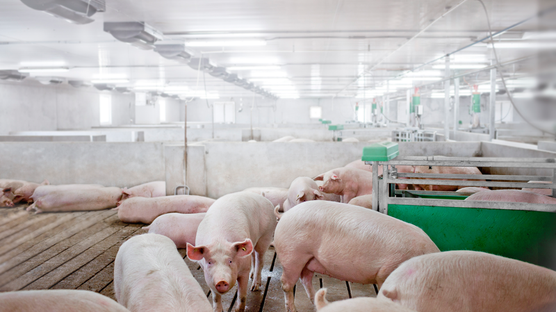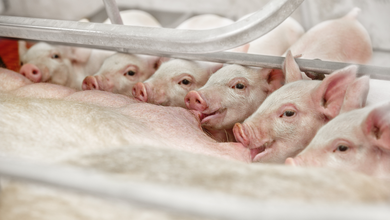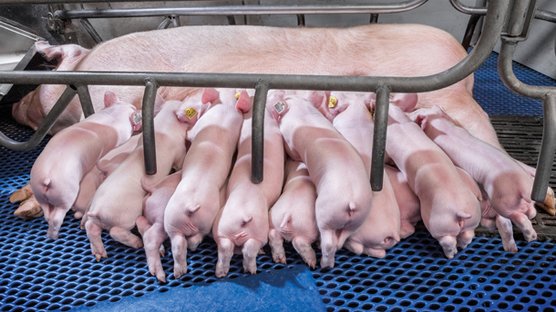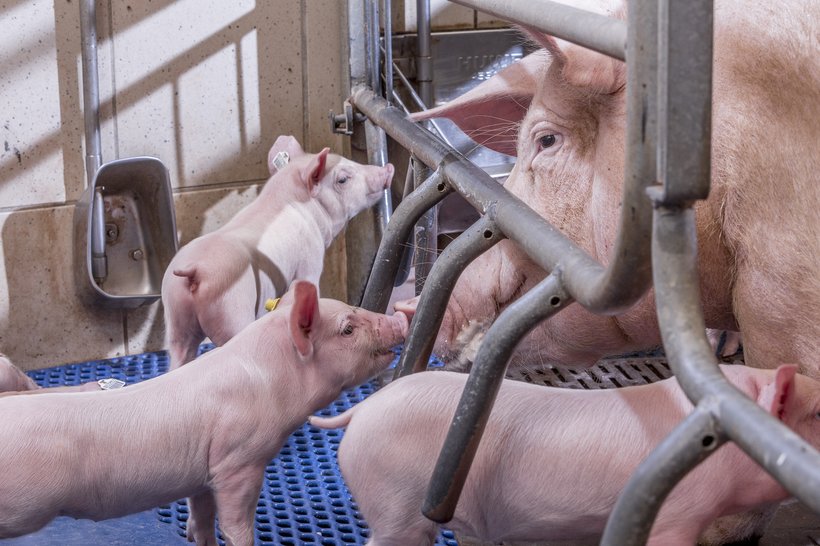
Published on Nov. 30, 2021
The Hypor Libra: the sow who stays around
The performance of your herd looks pretty good, but how are the individual sows performing and how long are they able to stay in the herd?
Each year, we invite our Hypor Libra customers from around the world to participate in a yearly sow productivity benchmark. To present the results from 2020, we will share a series of three articles, each highlighting a different area:
1. Litter Characteristics
2. Reproductive Efficiency and
3. Stayability.
This article covers the stayability of the Hypor Libra and will focus on the farms participating in the benchmark from the Americas.
The economic importance of retention rate
Stayability, or retention, is a measure of the sow’s ability to stay productive, maintain strong feet and legs, and survive in the herd. Sow retention is certainly multifactorial, but the longer a sow can stay in the herd, the more likely she is to repay her initial investment, make money for the producer, and ultimately wean more piglets in her lifetime. The rule of thumb is that a sow must wean 3 litters before she has repaid her initial investment. The graph below illustrates the retention rate from the top farms in the Americas, where 95% of gilts that enter the herd are served (mated), 90% wean a 1st litter, 82% wean a 2nd litter, and 75% wean a 3rd litter. With 75% retention rate of gilts to parity 3, the majority are not only repaying their initial investment and staying productive past parity 3, but also shoulder the cost of any gilts that were not retained.
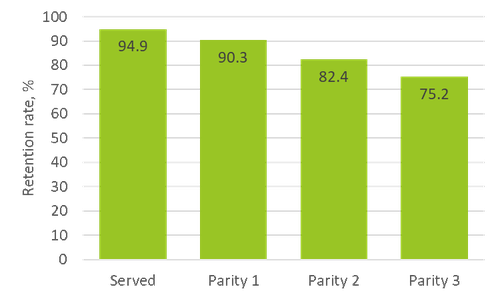
A high retention rate to parity 3 is also desired from a productivity perspective, as the most prolific parities are from 3-5. Therefore, it is not always advantageous to have a higher replacement rate (>50%). The better the management of sows, particularly the young females, the higher the retention rate. The Hypor Libra is an easy to manage sow, who shows a strong heat quickly after weaning and a low precent of repeat services, both of which improve retention rate. To improve gilt retention within the herd, it is critical to breed replacement females that have strong feet and legs and are able to maintain adequate body condition throughout the first lactation. This first gestation-lactation cycle will influence the success of the next reproductive cycle.
Retention rate is influenced by sow removal, which is predominantly through culling, and a smaller part due to mortality or euthanasia on farm. In the best case, we have a herd where we can choose which sows to remove (voluntary culling due to age or low performance) and reduce the rate of involuntary culling (due to reproductive and locomotion issues). To improve retention rate, first determine what the major removal reasons are on the farm. From there, it will be easier to make an improvement plan.
Hypor is setting the standard in sustainable swine breeding by selecting for a strong sow who is productive and efficient, litter after litter. Better sow retention allows for less culling and replacement, for a productive farm and sustainable future.

